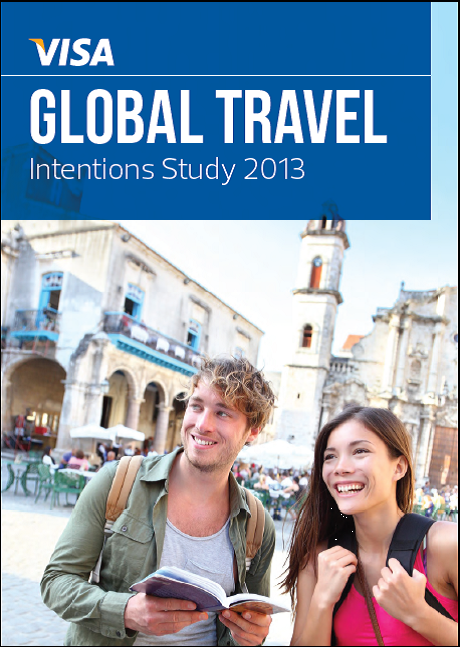Visa‘s latest Global Travel Intentions Study 2013 has revealed that global cross-border tourism is thriving and travelers intend to increase budgets for their next trip by an average of 5% – with some holidaymakers even suggesting that they would more than double what they spent on their previous trip.
Visa’s regular barometer of travel trends indicates budgets are no longer among the top three reasons behind why travelers choose their next holiday destination. The pull of attractions, scenery and rich culture are instead stronger reasons for travel.
According to the Study, which surveyed 12,631 travelers from 25 countries, the average global travel budget of US$2,390 per trip is set to increase to US$2,501. Top spenders abroad in the past were the Saudi Arabians, spending an average of US$6,666 per trip, while Australian (US$4,118) and Chinese travelers (US$3,824) were not far behind. Future travel budget increases are especially high amongst Asian markets with a predicted increase of 46 percent – travelers from Singapore, Thailand and Hong Kong all plan to at least double the budget of their last trip in the future.
United States remains the top choice destination
Attractions, Scenery, and Culture were cited as the key drivers for a future trip regardless of destination. This desire to explore new horizons was evidenced by the latest UNWTO World Tourism Barometer, which revealed that international tourist arrivals grew by four percent in 2012 to reach 1.035 billion.
Visa’s Study revealed the United States ranked as the most popular destination choice for global travelers, both for trips taken in the past two years (17 percent) and for intended travel in 2013 (10 percent).
Other top destinations in 2011 and 2012 included the United Kingdom (UK) (12 percent), France (12 percent) and China, Singapore, Thailand and Hong Kong (all 10 percent). Looking ahead, regional travel is set to increase, especially in reflection of the growing popularity and economic strength of Asia Pacific (APAC). 31 percent of global travel is expected to be to Asia, and new APAC destinations such as Australia (four percent) and Korea (three percent) are making it on to the latest list of most preferred destinations for future travel.
Travelers also ranked Japan (five percent) and Australia (four percent) alongside the UK (five percent) as the top four intended destinations for future trips abroad.
The Rise of the Asian Giant
The increasing popularity of APAC is partially driven from within the region. Among travelers across the four global regions (APAC; the Americas; Middle East and Africa; Europe), respondents from APAC indicated strong intention (77 percent) to travel more in the future – with residents from nine of the region’s markets stating a higher intention to travel than the global average. Much of this increased travel is expected to take place within the region, where 80 percent of Asian travelers have chosen to take trips in the last two years.
APAC travelers are also spending more during their trip – those traveling within the region spent an average of US$273 per day, higher than both the global average (US$239) and any other region.
“The Asian markets have experienced a huge boom in tourism over the past few years due to the continued strength of their economies and the implementation of policies that promote cooperation and coordination in cross-border tourism. The ease of travel within the region, coupled with a rising middle class, has seen a growing demand for travel among the population and we expect this trend to continue into 2013 and beyond,” said Martin Craigs, Chief Executive Officer, Pacific Asia Travel Association (PATA).
Increasing Ease of Travel
An increasing ease and availability of travel options is fuelling the tourism boom. This is particularly prominent in the airline industry where 85 percent of travelers prefer to fly to their destinations despite a preference for shorter distances. Of this figure, most (71 percent) chose to fly economy class while, perhaps surprisingly, only 16 percent chose budget airlines.
A Profile of Today’s Global Traveler
The results of the study paint a picture of today’s global traveler. They are seasoned travelers, with 79 percent travelling in the past two years, taking 1-2 trips per year. 80 percent plan their holidays in advance, taking an average of 10 weeks to organize the trip. Spending time with family and friends was cited as the most popular (38 percent) reason for a holiday. These trips are more likely to be organized independently (42 percent) and will last an average of 10 nights. They choose hotels of four stars and above (39 percent) with 69 percent choosing to take a trip with family members.
More: corporate.visa.com





